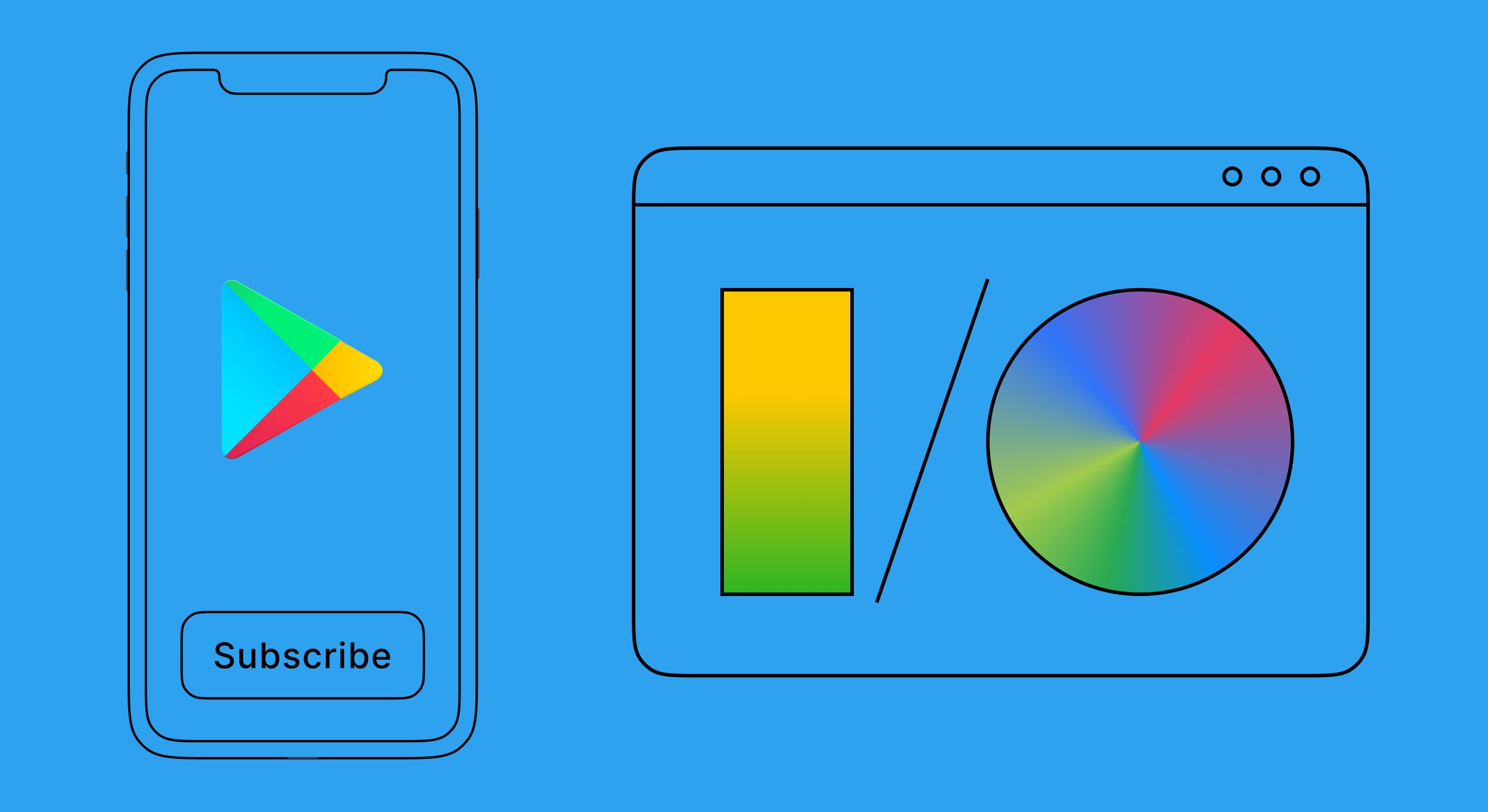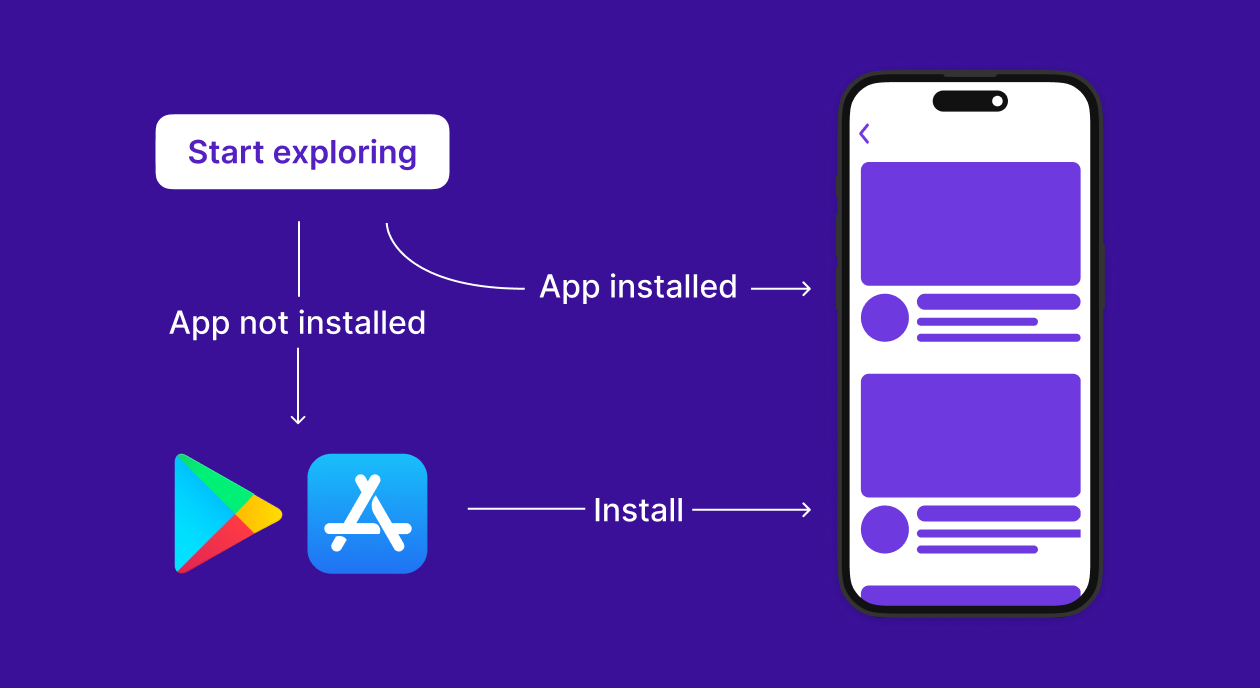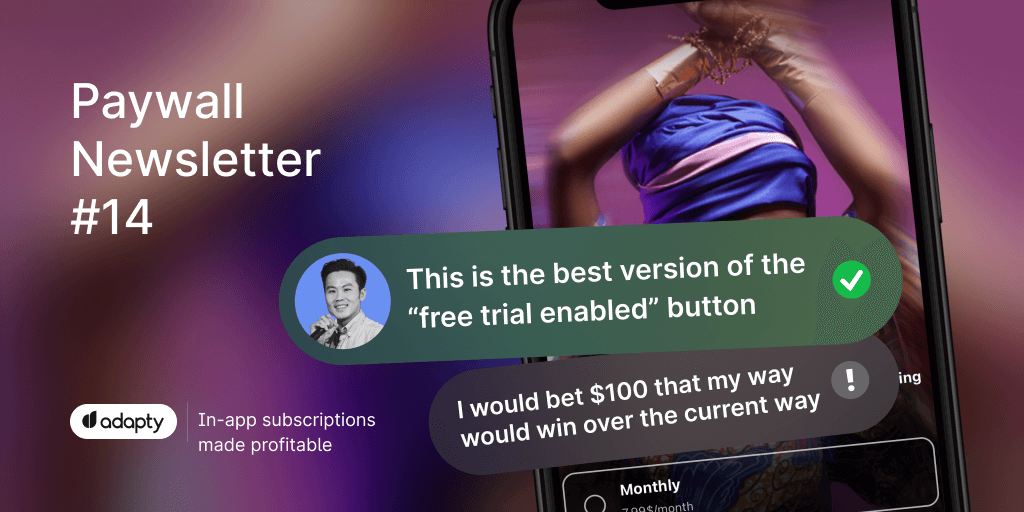What is user stickiness and how to calculate it

April 11, 2024
17 min read

People are spending 4 hours a day using different apps on their phones. Wouldn’t you like your app to be one of those? If you said yes, you’d want to dive into user stickiness.
And if that sounds like a foreign word, it’s all the more reason for you to keep reading. User stickiness is one of the most critical aspects of app usage that can indicate the performance of your app and help you build success that is stable and sustainable. What it is, why it’s important, how to calculate it and what impacts user stickiness… we’ll discuss all of that today!
What is user stickiness?
User stickiness refers to the degree to which users engage with an app or digital platform over time. It measures the frequency and depth of user interactions, indicating how well an app retains and engages its user base. And what exactly does it mean if your app is sticky?
A sticky app attracts users to:
- Return regularly,
- Spend more time within the app, and
- Engage with its features or content consistently.
Now onto the real question here. Why is user stickiness important, and why should you keep your eye on it?
Importance of user stickiness for your app marketing
User stickiness plays a pivotal role in the success of app marketing strategies and much more. Here are 3 key reasons why user stickiness is important:
Increases app growth
User stickiness directly impacts app growth by contributing to customer acquisition and retention efforts. A sticky app attracts new users through positive word-of-mouth referrals and organic sharing by existing users.
Satisfied and engaged users are more likely to recommend the app to others, leading to increased downloads and installations. Additionally, user stickiness helps in retaining existing users over time, reducing churn rates and maximizing user lifetime value.
Improves user engagement
User stickiness is closely linked to user engagement, as it reflects the frequency and depth of user interactions with the app. A sticky app fosters a compelling user experience that keeps users coming back regularly to engage with its features, content, and community. Engaged users spend more time within the app, explore its functionalities, and interact with other users, leading to higher levels of satisfaction and loyalty.
Fosters a loyal user base
A sticky app cultivates a sense of loyalty and attachment among users, who feel invested in the app and its community. Loyal users are more likely to continue using the app regularly, advocate for it to others, and provide valuable customer feedback and insights for improvement.
Moreover, a loyal user base serves as a foundation for sustainable growth and profitability, as it generates recurring revenue through in-app purchases, subscriptions, or advertising.
User stickiness vs user retention
While user stickiness and user retention are related concepts, they measure different aspects of user behavior. User stickiness refers to how often users engage with an app or platform over time, indicating the level of ongoing user engagement.
In the table comprised below, I’ve gathered all the main differences between user retention and user stickiness that you should know of:
| User Stickiness | User Retention |
| Measures the frequency and depth of user interactions over time | Measures the percentage of users who return to the app after their initial visit or installation |
| Indicates the level of ongoing user engagement | Reflects the app’s ability to retain users over time |
| Calculated based on metrics such as daily active users, session duration, and stickiness ratio. | Calculated as the percentage of users who remain active within a specified time period |
| Focuses on how often users engage with the app | Focuses on the overall percentage of returning users |
| Provides insights into the app’s ability to maintain a loyal and active user base | Helps identify factors influencing user retention and effectiveness of retention strategies |
Difference between churn and stickiness
Churn rate and stickiness are complementary metrics that offer insights into user behavior from different perspectives. But don’t be fooled because they’re not the same! Here are some main differences between user stickiness and user retention:
| User Stickiness | Churn Rate |
| Measures user engagement and retention | Measures user attrition over time |
| Is based on the frequency and depth of user interactions | Percentage of users lost |
| Assessed continuously or at regular intervals | Typically measured monthly |
| High stickiness reflects strong engagement and retention | High churn indicates user loss |
| Reflects the app’s ability to retain and engage users | Identifies issues affecting user retention |
How to measure user stickiness?
Imagine user stickiness as a large umbrella. Underneath this umbrella are different varieties of metrics, logic and approaches. So measuring the customer stickiness is spanned out to multiple ratios and metrics!
In this part of the blog, I want to talk to you all about understanding these metrics. And if you’re not sure how you can gather these analytics, Adapty can help. Trusted by over 7,000 apps like Genesis and Bumble, Adapty provides real-time insights to you about your app’s performance.
1. Daily Active Users (DAU)
Daily Active Users (DAU) is the number of unique users engaging with the app on a daily basis. For example, if your app has been installed 10,000 times and out of them, 4,000 users are interacting with it regularly, your DAU will be 4,000.
And as you can probably tell, this metric is instrumental in measuring daily user engagement levels, reflecting how frequently users interact with the app. It shows a reflection of user engagement as well as the experience they’re having.
A high DAU indicates strong product stickiness, suggesting that users find the app valuable enough to return to it regularly, which is essential for maintaining a loyal user base and driving consistent engagement.
2. Monthly Active Users (MAU)
Let’s carry the same example to understand MAU now. Consider your app has 4,000 daily users consistently— multiply that by 30 days of the month. That’s your Monthly Active Users (MAU)!
Monthly Active Users (MAU) count the number of unique users engaging with the app within a monthly period. MAU provides a broader view of user engagement over time, offering insights into the overall size and stability of the user base.
It helps app developers and marketers understand the app’s ability to attract and retain users over a more extended period, thus contributing to a comprehensive assessment of app stickiness and long-term growth potential.
3. Session duration
The amount of time a user spends in a single session is more important to understanding app stickiness than you might initially think. Here’s why:
A long session duration indicates a high level of user engagement which is directly proportional to app stickiness. That means, the more the engagement, the stickier the app! A total win-win, right? Well, it gets better.
A short session duration indicates quick task completion as well as low engagement. When you analyze these patterns, you can correspond an app change with the session lengths, allowing you to understand user preferences as well as app seasonality.
4. Retention rate
In simple words, the retention rate is used to measure the percentage of users whom your app retains. This means that they keep coming back to your app consistently for a specific period after the installation.
There are many reasons why customer retention rate is one of the most critical metrics to keep your eye on. For starters, this rate explains your customer loyalty as well as the app’s ability to engage and retain a user over time. It can also show a pattern of usage change caused by app updates, helping you analyze what your users like (or not)!
- Higher retention rate — Strong app stickiness and user satisfaction
- Lower retention rate — User dissatisfaction and poor user experience
5. Stickiness ratio
Last but not least, this ratio provides a concise measure of user engagement by indicating the proportion of monthly users who engage with the app on a daily basis. One could call it the big picture of your app usage!
A higher stickiness ratio suggests greater user engagement and app stickiness, as it indicates that a significant portion of the monthly user base is actively using the app every day. On the other hand, a low stickiness metric highlights the fact that something in your app is not appealing or engaging, leading to a leak of usage somewhere.
2024 subscription benchmarks and insights
Get your free copy of our latest subscription report to stay ahead in 2024.
What is a good app stickiness ratio?
There is no single app stickiness ratio that works for all apps out there. Since the target demographics and purposes of one app are different from the other, you’ll find a noticeable change in what the acceptable stickiness ratio is.
That said, most industries and apps accept 20% as a good ratio with anything over 25% as excellent. However, we did our research thoroughly and found out the healthy stickiness benchmarks in different app types.
Here is what a good application stickiness ratio might look like:
- E-commerce — 14%
- Health and Fitness — 22%
- Fintech — 27%
- Utilities — 18%
- Entertainment — 21%
- Social — 24%
- Gaming — 20%
Now let’s break these numbers into specific details as well. Earlier, I mentioned the importance of certain metrics, such as DAU, MAU, and user sessions. For different apps, these benchmarks look different, as shown in this table:
| Type of app | DAU/MAU ratio | Sessions per user per week |
| Social | Greater than 60% | More than 5 |
| Personal Productivity | Greater than 40% | 3 or more |
| Games | Greater than 25% | More than 2 |
| Business / Finance | Greater than 30% | 2 or more |
| News / Media | Greater than 20% | More than 2 |
| E-commerce | Greater than 25% | More than 2 |
Factors affecting user stickiness
User stickiness is influenced by various factors that contribute to the overall user experience and engagement with the app. Some of the key factors that impact stickiness are:
- App usability: Intuitive navigation, clear layout, and easy-to-use features enhance user satisfaction and encourage regular engagement.
- Content quality: Compelling, informative, and relevant content keeps users engaged and encourages them to return to the app for more.
- Personalization: Customized experiences, tailored recommendations, and personalized notifications cater to individual user preferences, increasing engagement and stickiness.
- User experience (UX): Smooth performance, fast loading times, and seamless interactions contribute to a positive user experience, fostering continued usage and stickiness.
- Performance and reliability: Consistent performance, minimal downtime, and reliable functionality build user trust and encourage long-term usage and stickiness.
- Community and social features: Interactive features like discussion forums, social sharing, and user-generated content create a sense of community.
- Rewards and incentives: Offering rewards, loyalty points, or exclusive benefits for regular usage incentivizes users to return to the app and engage with its features consistently.
- Continuous improvement: Regular updates, new features, and enhancements demonstrate the app’s commitment to innovation and improvement, keeping users interested and engaged over time.
How to increase stickiness on apps?
As a marketer or app developer, it can be hard to know where to start when it comes to user stickiness. But don’t you panic just yet! Help is on the way… or should I say just a few lines down?
Here are 4 key tips to help you increase user stickiness on your app in no time. Remember, user stickiness is a game of patience so play the long game in this one:
1. Enhance user onboarding
User experience is a direct factor when it comes to user stickiness. The better the experience, the more users will come back to your app! And so, a smooth and informative onboarding process is crucial for encouraging users to engage with the app regularly.
The best way to improve this experience is to make your user onboarding the most pleasant time for users. Simple, efficient, and impressive— that’s the golden trifecta of it! By offering a positive initial experience, you can increase the likelihood of users returning to the app regularly.
Here’s what you can do to enhance user onboarding and ultimately the user experience:
- Simplify the onboarding process by providing clear instructions and guiding users through key features.
- Offer interactive tutorials or walkthroughs to help users understand the app’s value proposition and how to navigate its functionalities effectively.
2. Personalize user experience
Personalization techniques play a vital role in increasing user engagement and stickiness. Utilize data-driven insights to customize the app experience for each user, such as offering personalized content recommendations based on their preferences and past interactions.
Implement features like customizable user profiles, tailored notifications, and personalized in-app experiences to create a more immersive and relevant user experience. As you cater to individual user needs and preferences, you can increase user satisfaction and encourage continued engagement with the app!
Tip: You can gamify your app by introducing goals, points, levels and similar game mechanics to encourage their usage!
3. Regular updates and new features
Continuously improving the app and introducing new features are essential for keeping it fresh and engaging for users. Regularly update the app to fix bugs, address user feedback, and enhance performance. Introduce new features and functionalities to provide users with additional value and reasons to return to the app regularly.
Consider incorporating user feedback into the development process to ensure that new updates and features align with user preferences and expectations. That way your users feel heard and you craft the perfect experience.
4. Optimize UX for a friction-free experience
A frictionless UX minimizes barriers and frustrations so it’s no wonder how paramount this tip is for improving user stickiness. It’s true that your first design won’t be the best one and neither will your draft idea that comes to life. When in app business, you’ll always have to refurbish your app into a better version with improved features and whatnot.
So how do you optimize your UX for an incredible user experience? Here are some tips:
- Streamline navigation and interaction within the app to reduce cognitive load and make it effortless for users to find what they need.
- Implement clear and intuitive navigation paths, organize content logically, and minimize the number of steps required to perform common tasks.
- Ensure that the app is accessible to users of all abilities by adhering to accessibility standards and using screen readers.
- Compress images, optimize code, and leverage caching techniques to speed up page load times.
- Enable a seamless multi-platform experience by ensuring design consistency across different devices and platforms.
- Use visual cues, animations, and tooltips to provide feedback on user actions and guide them through complex tasks or processes.
Key takeaways
User stickiness is a concept that many marketers and app developers take with a pinch of salt. But 2024 is not the year to keep up with that tradition because today, user stickiness can tell you more about your app than any other metric.
It signifies the app’s ability to retain users and foster long-term engagement, driving app growth and success. And by using this metric, marketers can enhance user stickiness, cultivate a loyal user base, and drive sustained app growth in the app landscape. Isn’t that what your goal is, too?
Recommended posts

Android
Trends-insights
10 min read
June 3, 2024





